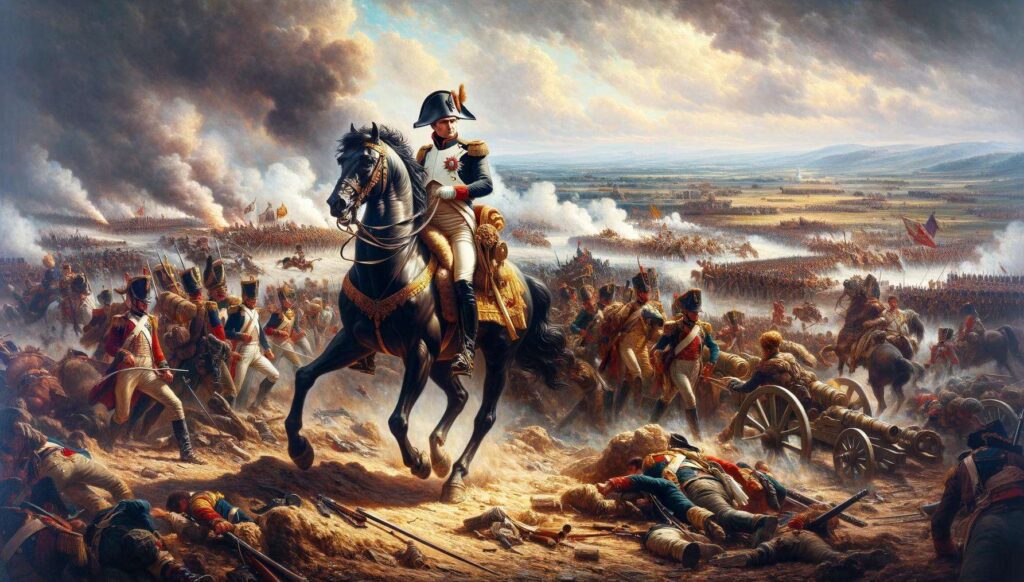From the linear formations of Napoleonic warfare to the blitzkrieg tactics of World War II and the modern strategies of cyber warfare and drone technology, the evolution of military tactics has been a constant process of adaptation and innovation. The Industrial Revolution brought about significant changes in warfare, while World War I and II marked turning points in the development of modern battlefield strategies. The Cold War era introduced unconventional and asymmetric warfare tactics, shaping the way conflicts were conducted. Today, military tactics continue to evolve in response to technological advancements, emphasizing precision and efficiency in achieving military objectives. The history of military tactics is a testament to the ever-changing nature of warfare and the ingenuity of those who adapt to new challenges.
The Evolution of Military Tactics: From Napoleonic Warfare to Modern Battlefield Strategies
Napoleonic Warfare
Napoleonic warfare, also known as linear warfare, was a style of warfare popularized by Napoleon Bonaparte during the early 19th century. This style of warfare involved large armies lining up in rigid formations and engaging in massive battles of attrition. The key to success in Napoleonic warfare was the ability to maintain discipline and control over troops, as well as use of artillery and cavalry to break through enemy lines.
The Industrial Revolution and Changing Tactics
The Industrial Revolution brought about significant changes in military tactics. With the advent of new technologies such as rifled muskets and artillery, warfare began to shift from linear formations to more flexible and mobile tactics. This period saw the rise of trench warfare and the use of railways to transport troops and supplies, as well as the development of more advanced military strategies.
World War I and the Birth of Modern Warfare
World War I marked a turning point in military tactics, as the scale and brutality of the conflict forced armies to adapt to new realities on the battlefield. The introduction of new weapons such as tanks, planes, and chemical warfare led to the development of new tactics such as infiltration and combined arms warfare. The use of trench warfare and attritional tactics also played a significant role in shaping modern battlefield strategies.
World War II and Blitzkrieg
World War II saw the emergence of Blitzkrieg, or “lightning war,” as a dominant military tactic. Developed by the German military, Blitzkrieg emphasized speed, surprise, and coordination between air and ground forces to achieve rapid victories. This tactic was instrumental in the early successes of the German military in Poland and France, but eventually proved unsustainable in the face of more determined and resilient enemies.
The Cold War and Modern Warfare
The Cold War era marked a shift towards more unconventional and asymmetric warfare tactics, as superpowers sought to avoid direct conflict with each other. This period saw the rise of guerrilla warfare, counterinsurgency operations, and cyber warfare as key elements of modern battlefield strategies. The development of nuclear weapons also introduced the concept of mutually assured destruction, leading to a focus on deterrence and strategic defense.
Modern Battlefield Strategies
Today, military tactics continue to evolve in response to changing geopolitical realities and advances in technology. Modern battlefield strategies emphasize a combination of conventional, unconventional, and cyber warfare tactics to achieve military objectives. The use of drones, satellite surveillance, and AI technologies have transformed the way wars are fought, allowing for more precise and targeted attacks on enemy forces.
Conclusion
The evolution of military tactics from Napoleonic warfare to modern battlefield strategies reflects the dynamic nature of warfare and the constant need for armies to adapt to new challenges. While the basic principles of warfare remain the same, the tools and tactics used to wage war have evolved significantly over the centuries, shaping the way conflicts are fought and won.
